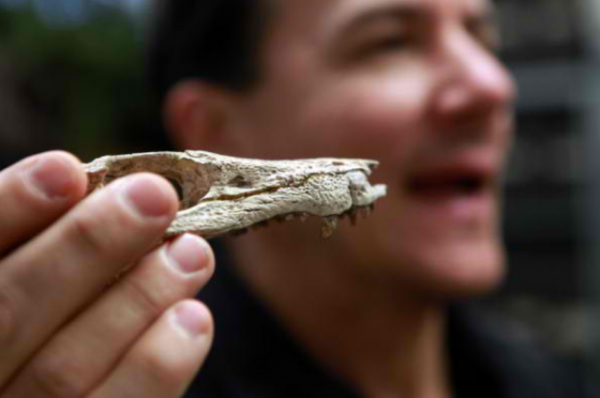Fossils of Dog-Sized Rat Species Found in Southeast Asia
| Daphne Planca | | Nov 10, 2015 11:02 AM EST |
(Photo : Getty Images) Fossils of seven giant rat species on East Timor were discovered. A team of archaeologists with The Australian National University found the largest rats, once lived in Southeast Asia, ever known to have existed with 10 times the size of modern rats.
Fossils of seven giant rat species have been discovered in East Timor. A team of archaeologists with The Australian National University (ANU) found the largest rats ever known to have existed. They are about 10 times the size of modern rats, according to Fox News. These distant relatives of rats evidently once lived in Southeast Asia.
Like Us on Facebook
ANU's Julien Louys, who lead the project, said that the rats are called mega-fauna and the biggest one weighs five kilos - the weight of a small dog. He said that their findings show that only half a kilo or 2.2 pounds is the size of the large modern rat.
Louys mentioned that East Timor is the location of the earliest records of humans dated 46,000 years ago. East Timor is a tiny country that earned its independence in 2002. He also mentioned that judging from the cut and burn marks on the bones, early humans likely co-existed and ate the giant rats.
These findings were presented last month to the Meetings of the Society of Vertebrate Palaeontology in Texas. From Sunda to Sahul is a project that is attempting to trace the movement of earliest human through Southeast Asia. Research studies is reportedly ongoing into what may have caused the rats to die out and what role humans might have played in their demise.
There is previous research showing evidence that humans in East Timor co-existed with giant rats for thousands of years. But there has been no explanation of how the supersized rats suddenly disappeared. Their extinction may be related to the introduction of metal tools in Timor. People, who started to clear out forests at a much larger scale, possibly also cleared out the rats.
University Herald reported that the team is hoping to discover more on the islands of Southeast Asia about early humans activities and their impact on the ecosystems. They are also curious about what was there before humans arrived.
TagsFossils, rats, giant rats, dog-sized rats, southeast asia, East Timor, Australian National University
©2015 Chinatopix All rights reserved. Do not reproduce without permission
EDITOR'S PICKS
-

Did the Trump administration just announce plans for a trade war with ‘hostile’ China and Russia?
-

US Senate passes Taiwan travel bill slammed by China
-

As Yan Sihong’s family grieves, here are other Chinese students who went missing abroad. Some have never been found
-

Beijing blasts Western critics who ‘smear China’ with the term sharp power
-

China Envoy Seeks to Defuse Tensions With U.S. as a Trade War Brews
-

Singapore's Deputy PM Provides Bitcoin Vote of Confidence Amid China's Blanket Bans
-

China warns investors over risks in overseas virtual currency trading
-

Chinese government most trustworthy: survey
-

Kashima Antlers On Course For Back-To-Back Titles
MOST POPULAR
LATEST NEWS
Zhou Yongkang: China's Former Security Chief Sentenced to Life in Prison

China's former Chief of the Ministry of Public Security, Zhou Yongkang, has been given a life sentence after he was found guilty of abusing his office, bribery and deliberately ... Full Article
TRENDING STORY

China Pork Prices Expected to Stabilize As The Supplies Recover

Elephone P9000 Smartphone is now on Sale on Amazon India

There's a Big Chance Cliffhangers Won't Still Be Resolved When Grey's Anatomy Season 13 Returns

Supreme Court Ruled on Samsung vs Apple Dispute for Patent Infringement

Microsoft Surface Pro 5 Rumors and Release Date: What is the Latest?










